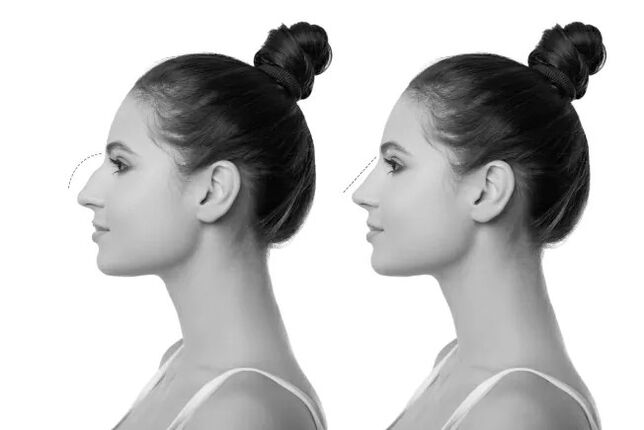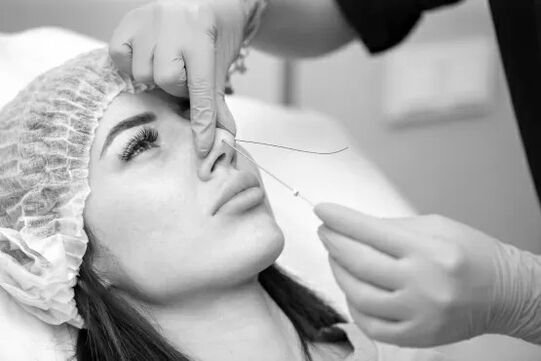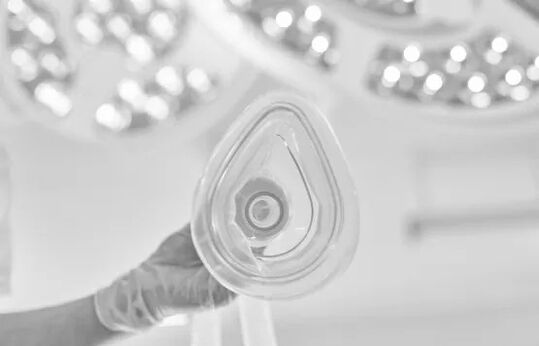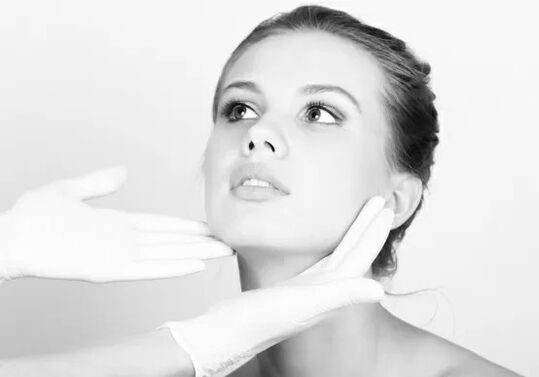Every third person on this planet has considered a nose correction at least once. 70% of patients choose rhinoplasty because they are dissatisfied with the appearance and want to solve the aesthetic problem: eliminate bumps, make the nose thinner, smaller, and smoother. This is because they are 100% dissatisfied with its appearance. 30% of patients decide to undergo rhinoplasty surgery for medical reasons-nose injury, difficulty breathing, nasal septum deviation or frequent sinusitis.
Problems with the shape of the tip of the nose are not uncommon. But please don't be shy, all problems can be solved. If the body shape defect can be corrected by dressing, eating, or exercising, then you need to contact a plastic surgeon to correct your nose or lips.
In this article, we will discuss all the functions of the procedure, preparations for cosmetic surgery, and other important stages.
Indications and contraindications: medicine, aesthetics, indirect, absolute

Rhinoplasty is a surgical procedure that takes 1-2 hours. As a result, the patient's appearance changes and the face becomes more attractive. Before plastic treatment, it is necessary to agree on all the points with the doctor and make adequate preparations for the implementation of the method: pass the test, go on a diet, quit smoking and alcohol at least one week before the operation.
Surgical indications
The indications for this procedure are congenital and acquired.
The congenital indications of plastic surgery have a variety of aesthetic and physical defects: hook shape, fork shape, thick or drooping tip, its lateral displacement, and the nostril is too wide or too narrow.
Surgery may be required after an injury or a disease with a curved nose, and in cases where breathing is difficult due to changes in organ structure or age (skin aging). The above instructions are deemed to have been obtained.
To restore or correct the tip of the nose, you need to consult a surgeon. If surgery is necessary, the density of cartilage, the thickness of skin and tissue, the length and width of the nose, and other factors will be taken into consideration. The patient’s wishes are always considered and achieved as much as possible, but the final decision is made together with the doctor, because excessive removal of cartilage can lead to poor physical conditions.
Before surgery, you need to check the nasal cartilage and make sure that the skin in the area of the respiratory organs is healthy-there are no signs of inflammation or infection.
Surgical contraindications
Nose tip correction is a serious process and must be done consciously. What are the contraindications for this surgery?
- age.The operation has been performed since the age of 18. At this age, tissue formation occurs completely. However, the surgeon recommends correcting the tip of the nose between the ages of 20 and 35. This will complete the formation of bones and cartilage, make the skin elastic, and restore vitality after the operation.
- Blood clotting problems.When the patient has poor blood clotting, the risk of surgery is higher than usual, so it is best to refuse surgery.
- Chronic diseases worsen.The surgeon does not recommend surgery during the worsening of the disease. It’s best to wait until your health returns to normal and get checked. Rhinoplasty can only be decided if the test result is positive.
- Viral diseases, infections, inflammations.It must be remembered that if there are at least minimal health problems, it is best to postpone surgery until full recovery.
- Oncology.Rhinoplasty is forbidden for oncology patients.
- menstruation.Surgery is prohibited during menstruation. Hope to correct within two weeks after the end of menstruation.
Cosmetic surgery is also prohibited during pregnancy or breastfeeding. Before the operation, the patient must be checked and tested in order to provide the necessary preparations for the rhinoplasty.
Other correction methods. Why rhinoplasty is the safest method

In order to correct the nose, the surgeon will use different surgical techniques according to the client's wishes and the patient's desired results. However, you can find other ways to correct the tip of the nose online.
clamp
In online stores, you can find so-called "nose correction clips". The manufacturer guarantees that when the braces are worn 2-3 times a day, the effect will be very obvious, which is equivalent to performing surgical operations. But, naturally, this is far from the truth. For nose correction, pseudo-expert clips or other equipment will not work. If there is any effect, it will be short-term, lasting 2-3 weeks, and the correction effect is not obvious.
Practice questions
There is a set of exercises for the face that allows you to correct its shape. These exercises are useful for maintaining muscle tone, cheek bones and double chin, but are not effective for correcting the shape of cartilage. The effect after full-body exercise lasts for 2 weeks.
Thread correction
The threading technique is performed by an expert with a special needle through micro-puncture. The specially designed notch thread is inserted into the skin of the nose to form a frame. The thread is inserted through a small puncture hole, and the frame holds it in place. Two days later, the doctor removed the end of the thread, and the patient saw the final result, which lasted for about 3 years.
Use of hormonal drugs
To correct the tip of the nose, you can also take hormone drugs. First, you need to consult an endocrinologist. If there are no contraindications, hormonal drugs can be taken. Perform this step to remove excess soft tissue and lift the tip. To make corrections, you need to perform a 2 to 3 week process. It is worth noting that these drugs can have temporary effects-ranging from 3 months to 2 years, depending on the drug selected.
Surgical correction
According to experts, rhinoplasty is the most reliable and effective correction method. Unlike previous methods, rhinoplasty can provide lifelong results. The process lasts for 1-2 hours under local or general anesthesia. The main advantages of this operation:
- All possible correction options (lower or raise the tip, reduce, straighten or narrow the tip of the nose);
- Eliminate breathing difficulties;
- Lifetime result
- Correct injuries, birth defects.
3 Techniques to perform operations. What's the difference
There are several types of rhinoplasty: classic closed, open and mixed methods. Surgeons perform different types of plastic surgery according to the results to be achieved, the shape of the nose, the position of bone and cartilage tissue, and other factors.
A characteristic of classic closed plastic surgery is that it can be used to correct the back of the nose, but tip correction is more difficult than using open correction surgery. In the case of this method, an incision is made in the nasal passage, and it is only possible to approach the tip when the cartilage is moved into the incision. But there are also advantages-no visible scars after surgery. The enclosed plastic is suitable for removing humps or correcting bone tissue when bent.
In the case of open surgery, the surgeon makes an additional incision between the nostrils. This helps to better access the structure of the nose and provides a wide range of possibilities for changing the size and shape of the nose. The scar after the operation is almost invisible and small. Using this method, you can reshape the tip of the nose more effectively (compared to the closed method). Its disadvantage is that it may form a small scar on the outside of the nose and has a longer recovery period. A few months after the operation, the scar becomes smaller. You can also use other healing agents and creams to remove it. If necessary, the surgeon will recommend it.
Because the above methods have their disadvantages, surgeons have developed a combined plastic surgery technique. When in use, an incision is made in the nose, which is a feature of both methods, but unlike the open method, there is no external incision on the skin.
Considering all the advantages and disadvantages of closed and open methods, a combined (also called "hybrid") method has been developed.
The main advantage is that it can change the structure of the nose as much as possible without leaving visible scars. The combined method can recover within 2 weeks, and there is no visible scar on the skin.
When using a hybrid method, the surgeon has the opportunity to correct during the operation and control the desired results, thus avoiding the possibility of over or under correction. The combined approach has only one disadvantage-from a technical point of view, it is more complicated.
A few words on important matters. Prepare for surgery

Before performing rhinoplasty surgery, you need to receive training. You will need to consult with a plastic surgeon to discuss the required changes. The surgeon examines the nose and explains the reality of obtaining the desired result. During the consultation process, issues related to limitations, operation, preparation characteristics, postoperative rehabilitation and possible complications were discussed.
Before the operation, the patient needs to be checked to ensure that there are no contraindications and to pass the following checks:
- Blood is used for HIV infection and hepatitis C and B;
- Clinical blood tests;
- Blood biochemistry
- Laboratory analysis of urine;
- Prothrombin index analysis;
- Fluorescence photography
- Electrocardiogram
- Test tumor markers;
- Radiographs.
In addition, patients need to listen to the doctor's advice and follow them. Avoid drinking alcohol, stop smoking, do not use blood thinners, and do not drink water or eat food five hours before the operation. It is important to avoid active pastimes and walking under the scorching sun two days before the rhinoplasty.
The surgical process and its main stages

Rhinoplasty surgery is performed under general or local anesthesia. The choice of anesthesia type depends not only on the client's wishes and the particularity of the operation, but also on the method used by the plastic surgeon when performing anesthesia. The patient can always share his desire for anesthesia, but the final decision is up to the doctor. The process and quality of rehabilitation after rhinoplasty also depend on the choice of anesthesia.
If hormone injections, fillers, or threads are used to make minor corrections to the nose, use local anesthesia. These correction methods do not cause severe pain, so general anesthesia is not required in most cases. However, when the surgeon needs to touch the bones of the nose or cartilage, this anesthesia is not actually used for rhinoplasty surgery.
In most cases, the surgeon will use general anesthesia. This anesthesia allows you to completely avoid the pain during the operation, and the patient will not have any memory of the operation.
This operation takes 1-2 hours. After anesthesia, the surgeon makes an incision in the skin or mucous membrane. According to the patient's wishes and specific circumstances, the doctor chooses an open or closed method for the operation.
During rhinoplasty, the doctor separates the soft tissues of the nose from the bones and cartilage in the nasal cavity. He then moved cartilage and bone fragments to model the new shape of the nose. After the operation, the plastic surgeon applies absorbable sutures to the skin or mucosa, depending on the location of the incision. The next step is to plug the nasal cavity with a large gauze plug. The final stage of the operation is to apply a fixed plaster cast.
The surgeon chooses the type of incision according to the structure of the nose, the complexity of the operation, and the surgeon's work preferences. The cut can be axial, vertical, elliptical or angled.
Rhinoplasty itself is performed through three main methods: open, closed and combined. The function of each method is described in the "Operation Type" paragraph
The choice of plastic surgery methods is presented directly to the patient, but the doctor recommends the least traumatic method. The surgeon said that the least traumatic method is closed and combined, because the incision is small when used, and the postoperative recovery is faster.
Advise the surgeon after surgery. How to avoid complications

The average recovery time after surgery is 20 to 25 days. If the rhinoplasty is performed under general anesthesia, the patient must also be hospitalized 24 hours after the operation.
Three days after the operation, gauze or cotton swabs should be placed in the nasal cavity to ensure that the new form does not move and to prevent swelling. 5-8 days after the plastic surgery (depending on the healing speed), the suture material is removed. One week or 10 days later, the patient was removed from the plaster model, and the hematoma and swelling began to disappear gradually.
Postoperative doctor’s advice:
- Sleep on your back, make sure to use a high pillow.
- In order to reduce the discomfort associated with dry mouth (one of the possible consequences of this process), please use a special solution or paste to soften it.
- Don't abuse alcohol and smoking.
- Refusal to go to baths, solariums, saunas.
- Don't wear glasses.
- It is forbidden to increase the burden of physical exercise on oneself.
- Temporarily stop eating hot food and drinks.
- Do not touch, rub or touch your nose.
Possible complications
Complications after rhinoplasty are rare. Some of them will appear immediately after correction, while others will appear in the later stages of healing. Natural complications include edema and bruises. The external symptoms of edema disappeared within a week after the plastic surgery, and the deep edema disappeared after six months. Ten days after the operation, the difficult breathing disappeared.
In order to protect yourself from possible complications as much as possible, it is important to carefully choose specialist doctors, clinics, and provide complete information (if any) about your health, injury or illness. The final outcome of the operation also depends on strictly following the doctor's recommendations during the recovery period.
in conclusion
Regardless of age, men and women use rhinoplasty. The surgeon recommends surgery to correct the tip of the nose at a young age without delay. It is important to have a complete examination to ensure that there are no contraindications to cosmetic surgery. The most popular indications for rhinoplasty are:
- Correction of nose tip (large, pointed or round);
- Long nose
- Wide nose bridge;
- Lift or reduce the tip of the nose;
- Eliminate asymmetry;
- Shortness of breath;
- Eliminate the consequences of injury or poor quality rhinoplasty;
- Correction of nose tip.
If the patient has minor defects, surgery is performed under local anesthesia. In the other 90% of cases, rhinoplasty surgery is performed under general anesthesia. The process itself takes one to two hours. The method of performing this process (opening or closing) is based on many factors. These include the complexity of nose defects and the wishes of customers. But the final decision is still left to the plastic surgeon.
The quality and final results of rhinoplasty directly depend on the choice of specialists and clinics, so it must be completely resolved.




















